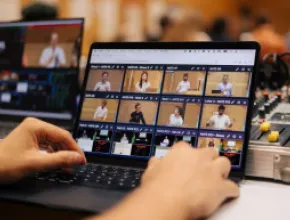Caitlin Murphy, a public relations associate with Planit, a full-service ad agency, says social media tools can guide and inspire attendee behaviors before, during and after an event.
Following are planning tips to consider:
- Include social media planning during your initial event planning process, ensuring the event venue has an adequate wireless connection, that event printed materials include social media contact information, and speakers or brands are engaging on social media, etc.
- Create an online “event” using a favorite social site that allows others to invite and share with their social networks (Elite, Yelp, Eventbrite, Facebook, etc.).
- To help drive engagement, create a challenge to encourage attendees to share socially, ie., if we get 100 participants, everyone gets a free x, y or z.
- Tag and mention other organizations/locations associated with event.
- Assign someone to be dedicated to social media. This is an important step because live events can distract, and social media can get lost.
- Use the proper hashtag to drive engagement and start your event by telling attendees the proper Twitter handles and hash tags to use.
- Engage with key influencers such as journalists and bloggers to collaborate with the public relations team to develop earned media.
- Bring the event to life through instant posting.
- Post photos and updates on Facebook, Twitter, Pinterest, YouTube, Vine (new, six-second videos) and Instagram and Foursquare (for brick-and-mortar events).
- Post and tweet about the success of the event after it closes event, and thank attendees, workers, volunteers, etc.
- Ask attendees specific questions to drive engagement.
- Extend the event’s life and include non-attendees by sharing event assets by uploading photos to event Facebook albums, sharing picstitches from the event, posting event videos, etc.
- Encourage attendees to “check in” at the event location on social media.
- Evaluate the success of event--what worked and what did not. Learn from both for the next event.





